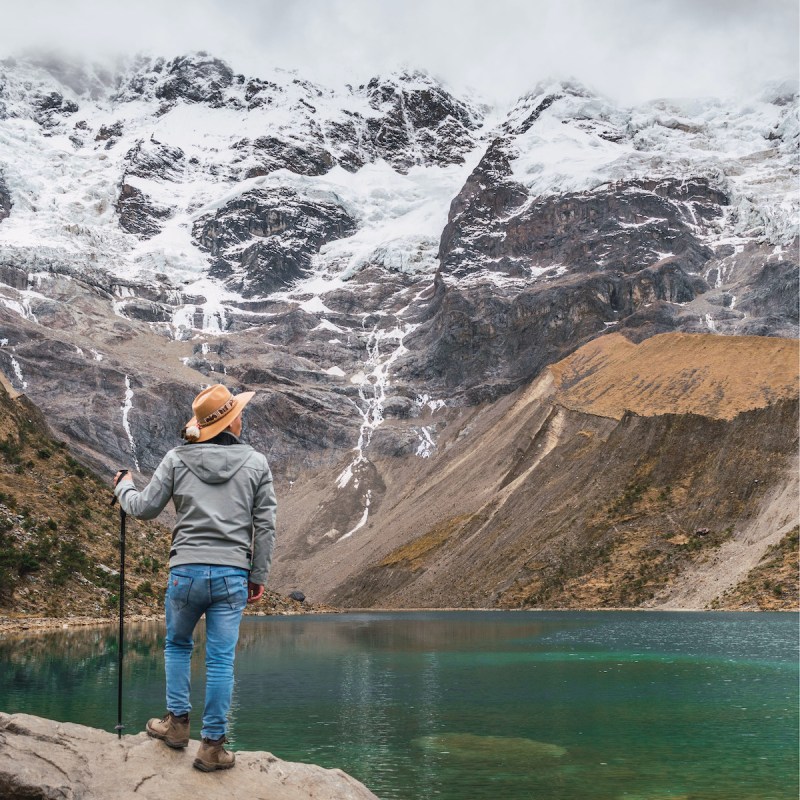
From a young age, Syren Nagakyrie spent a lot of time outside, but couldn’t always enjoy it like others.
Videos by TravelAwaits
“As a kid, I spent a lot of time outside, sitting in the yard, and watching nature. It wasn’t until my mid 20s that I started really trying to figure out what hiking looked like for me. There were lots of barriers and obstacles, including a lack of information and people who didn’t understand disability or what I needed,” they said.
Syren, who is nonbinary and uses the pronouns they/them, has Ehlers-Danlos syndrome, postural orthostatic tachycardia syndrome, and other disabilities that make hiking difficult.
They were often left behind in group outings and didn’t have support from teachers, peers, or really anyone else. So, they started to figure out what their body could do outdoors on their own.
“For me, being outdoors over time has really helped me develop a sense of belonging. Society often tells you that disabled people don’t belong here, especially in the outdoors where the narrative is often about conquering this mountain or having an extreme experience. When I’m outdoors noticing nature and the way it adapts and how disability is present in the natural world, it makes me feel like I’m in a place where I belong.”
One day, Syren was out on a trail that they had researched and immediately encountered a steep drop-off, steep stairs, and other obstacles that were not in the information they read.
“I was getting tired and my pain was increasing. I stopped at a waterfall and had this inspiration. So, when I got home, I wrote a blog and created a trail guide.”
That’s how Disabled Hikers was born. They started writing more and created social media platforms. Now, it’s grown to an entirely disabled-led organization that celebrates disabled people’s experiences in the outdoors.
We know there are so many others who love to be out in nature, but maybe had a similar experience to Syren’s. To help you get back out on the trail, we talked to Syren to get five tips for hikers with mobility issues.
1. Reference Online Information And Guides
Look up accessible trails in your area. Syren says to contact parks and find out what kind of amenities and trails they offer.
Disabled Hikers has 30 guides on its website. It gives people detailed trail information on the entire experience from start to finish. Information about amenities, parking, water fountains, benches, the length of the trails, trouble spots, what the surface is like, and where you can step off the trail to take a break.
“It’s been amazing. I’ve connected with so many other folks who have wanted to find other people who are disabled and interested in the outdoors or love hiking for so long. I’ve had the opportunity to work with many parks and organizations to improve access and build a community by and for disabled people.”
2. Use Equipment And Aides
Syren says to use whatever you need to use to have a comfortable experience. They use hiking poles, bring lightweight backpacking chairs, and pack medical supplies they might need.
“I used to feel a lot of shame about crutches, canes, wheelchairs, but that was allowing me to get out there and do these things. It’s a valid way to be outdoors.”
3. Go At Your Own Pace
You don’t have to have an intense experience to enjoy the outdoors. Syren encourages you to go at your own pace.
“There’s this idea that if you’re not out there conquering a mountain, you’re not outdoors. That’s not true. You can have a meaningful experience sitting on a park bench or driving to a bird refuge. Whatever small way to get outdoors that can be meaningful.”
4. Feel Confident
It took Syren a long time to feel confident. They recommend doing research before you hike, talking with other disabled hikers, not hiking alone, and telling someone who is not hiking with you about where you are going. Syren recommends sticking to front country and popular trails until you get more confident, and learn to use a map.
“Anytime I go outside, I risk injury. So, it took me a long time to stretch myself into that limitation and understand I could do things even though I wasn’t feeling confident or people told me I couldn’t. It is ok to be unsure of yourself, developing confidence takes time.”
5. Find Others To Hike With
There are a lot of organizations that are working in the outdoor space, but the majority are led by people who aren’t disabled and are providing services to disabled people rather than with disabled people. Disabled Hikers has flipped that so it’s entirely disabled-led. That creates a place where people can embrace their disabilities and a safe space where people can be open, honest, and ask for help.
“Sometimes we may only go half a mile or a mile, but it’s a really meaningful experience to get outside, experience, and figure it out together.”
What’s Next?
Right now, Syren is working on the next guide book. The guide book is due to be released in the summer of 2024. It will be about Northern California. They are also working on a network and leadership development program so others can do this work in their communities.
Syren wants others to know it’s possible for anyone to enjoy the great outdoors.
“You can absolutely go out and have a meaningful experience. It may look different than what you are used to, but it’s entirely possible to go out and have an enjoyable experience. Don’t compare who you are now with who you used to be. Embrace the experience from wherever you are now.”
For more articles about hiking, check out:

